10 Superfoods to Boost Your Brain Function You Should Eat Every Day

Do you want to boost your brain function by eating superfoods? Eoin Dillon, certified personal trainer and founder of CRYOGEN, a brand specializing in longevity supplements, is dedicated to crafting nutritionist-approved products that redefine the aging experience. "I've broken these brain-boosting superfoods into short-term, medium-term, and long-term categories to help you understand how each one can impact your cognitive health over time," he says. "Not all foods deliver immediate results, and some require consistent consumption to see lasting benefits. By breaking them down this way, I want to highlight which foods can give you an instant mental boost (like focus or alertness), which will enhance cognitive function over a few weeks, and which will protect your brain in the long run. This way, you can make informed decisions based on your goals—whether you're looking for quick improvements or aiming for lifelong brain health."
Short-Term: Green Tea

These foods offer short-term benefits, like an "immediate effect on focus, alertness, and mood," says Dillon. The first is green tea. "The combination of caffeine and L-theanine provides an immediate boost in focus, alertness, and calmness," he says.
Short-Term: Dark Chocolate
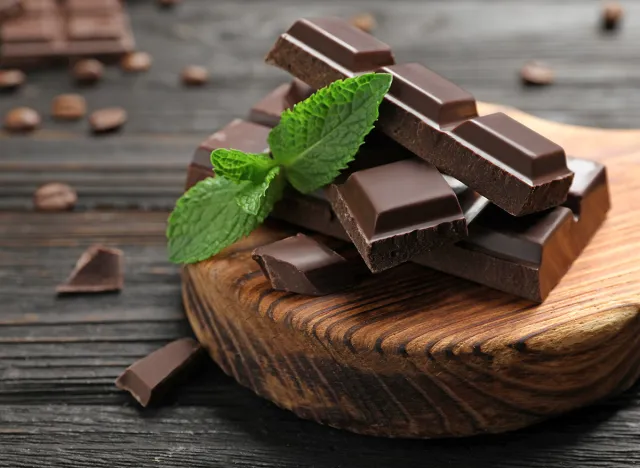
The second is dark chocolate. "Flavonoids and moderate caffeine content can enhance mood and brain function quickly by increasing blood flow to the brain," he says.
Short-Term: Eggs
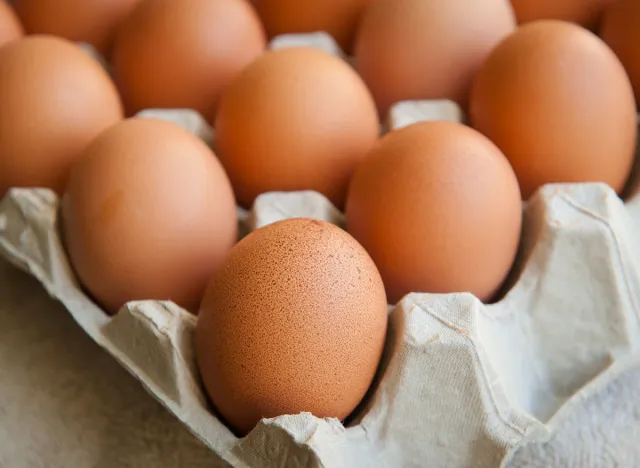
Next up, eggs, which are "nature's multivitamin," he says. "High in choline, which helps in neurotransmitter production, improving immediate cognitive function and memory."
RELATED: Hilary Downey's 4 Easy Tips to Shed Pounds by Thanksgiving After Her 100-Pound Weight Loss
Short-Term: Avocados
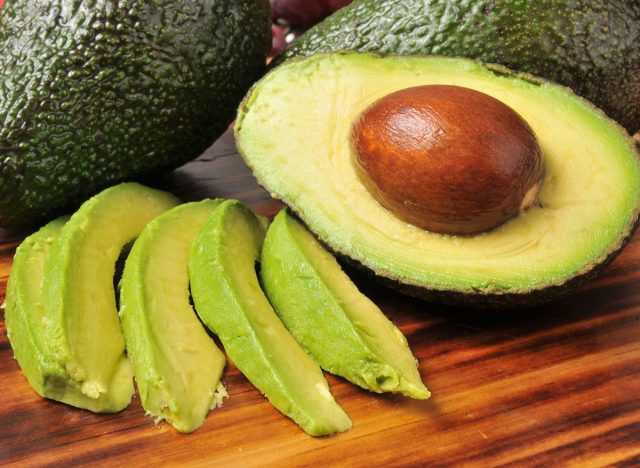
Avocados are the fourth short-term food. "Their healthy fats improve blood flow to the brain, giving an immediate boost to mental alertness," he says.
Medium-Term: Blueberries
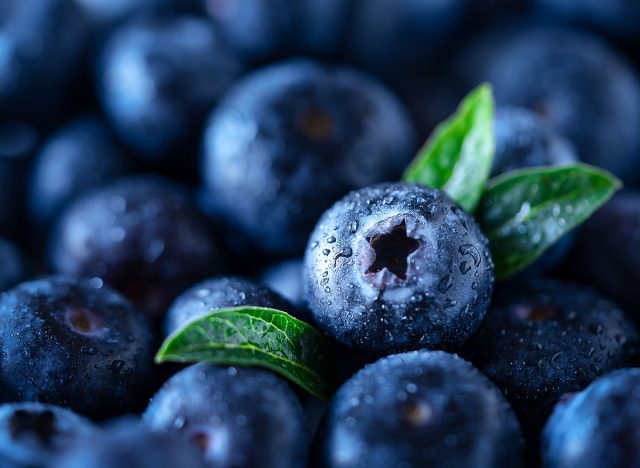
Improved cognitive function over weeks to months a benefit of medium-term foods. Blueberries are the first. "Regular consumption helps improve memory and cognitive function within weeks by reducing oxidative stress and inflammation," he says.
Medium-Term: Fatty Fish
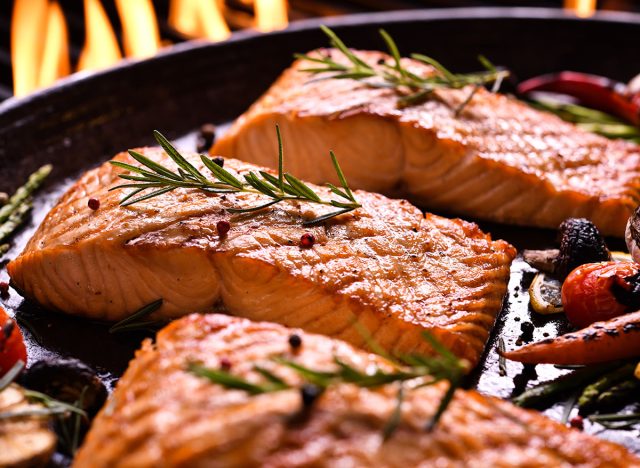
Next up, fatty fish like salmon, mackerel, and sardines. "Omega-3s in fatty fish improve memory and mental clarity over weeks by building healthy brain cell membranes and reducing inflammation," he says.
RELATED: Top 8 On-the-Go Protein Snacks That Burn Fat and Build Muscle
Medium-Term: Pumpkin Seeds
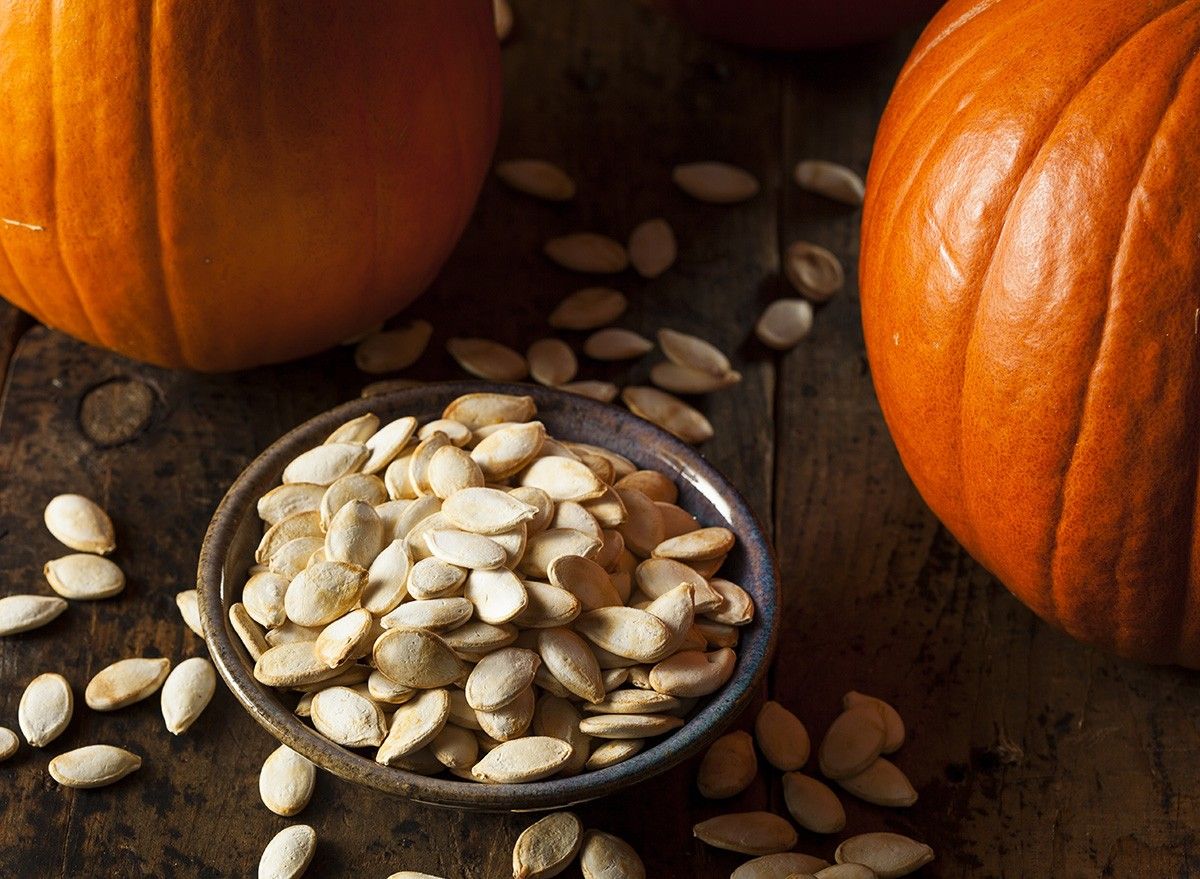
Pumpkin seeds are up next. "The magnesium, zinc, and copper support memory and concentration over time by aiding in nerve signaling and neurotransmitter production. I'd recommend taking a magnesium glycinate supplement before bedtime for a deep restorative night's sleep," he says.
Medium-Term: Walnuts
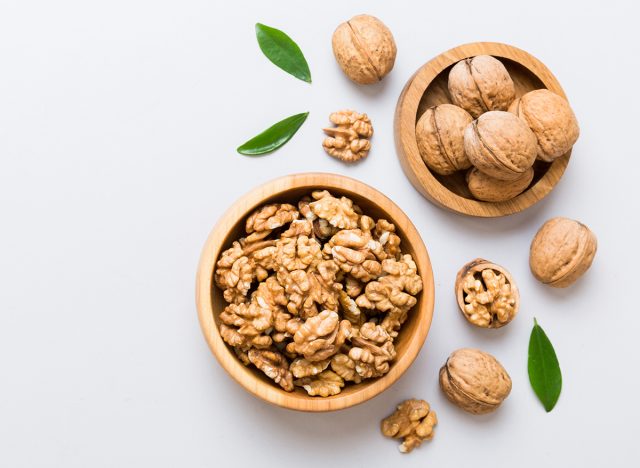
Snacking on walnuts can benefit your brain. "The omega-3s and antioxidants help improve cognitive function and reduce brain fog over a few weeks of regular consumption," says Dillon.
Long-Term: Turmeric

Foods to consume with long-term benefits, including cognitive health and brain protection over months to years, include turmeric. "Curcumin's anti-inflammatory and antioxidant properties protect against cognitive decline and help with long-term memory enhancement by promoting neurogenesis (new brain cell growth)," he says.
RELATED: 10-Minute Workout to Strengthen Your Core Even for Complete Beginners
Long-Term: Leafy Greens
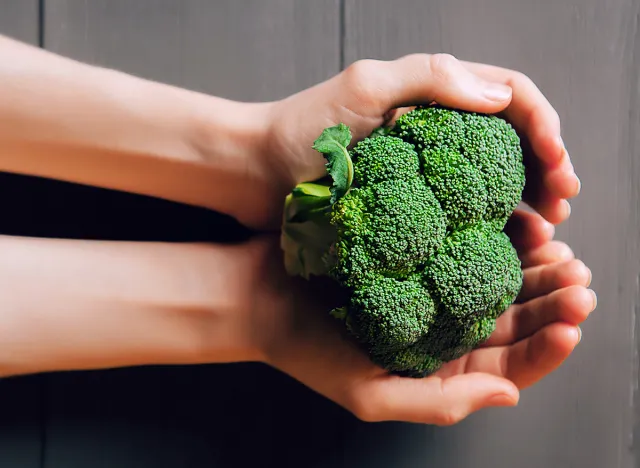
Leafy Greens, including spinach, kale, and broccoli, are also beneficial. "Regular consumption helps protect against cognitive decline and supports brain health over the years by providing vital nutrients like vitamin K, lutein, and folate," he says. And if you enjoyed this article, take advantage of these 15 Quick Ways to Lose Body Fat Percentage in a Week.




